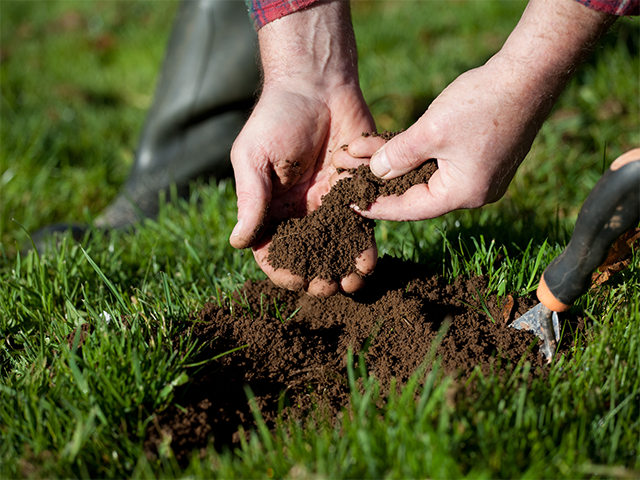9 Essentials for a healthy, weed free lawn
13 Jun 2018

Ironically, the healthier your grass, the fewer weeds you’ll have to content with. This is because healthy grass grows so well it leaves no room for weeds and they stop growing. But it’s a process to get to that stage, so here are the 9 things you’ll need to do to create your healthy, weed free lawn…
Land, lawns and gardens - get the essentials on maintaining a great lifestyle block. Download your free guide now.
Healthy soil
Knowing your soil pH level is essential. It’s the difference between your grass thriving and gagging as it gets “stressed” by too many or too few of the right nutrients.
Test it with a home testing kit they’re reasonably cheap and readily available. Take your sample from just below the surface. If you’ve recently added lime or fertiliser wait three months before testing so you get an accurate reading.
If the pH value is over 7.0 you have alkaline soil, meaning your grass probably wants a dose of phosphorus, iron and manganese. If your soil has a pH value below 7.0, it is acidic (very common in NZ) and you may want to add calcium, potassium, magnesium and copper, among other things.
Weed before they seed
Try and get weeds out when they are young so they don't go to seed. And avoid deep hoeing or cultivating that can bring weed seeds to the surface.
Wait for the rain
Manually removing weeds from the lawn is best done after rain (or watering) when the soil is looser and you can pluck out the whole root. This works best on young weeds; more established weeds might need to be sprayed.
Weed killers
Chemical weed killers are often formulated to target a certain type of weed so you can apply them easily without worrying about also killing the surrounding grass. Try a little detergent in the spray to help it disperse and stick better.
Cheap and cheerful natural home remedies may also work. They won’t target just the weed directly but they’re very kind on the environment. Try boiling water, vinegar or salt solutions, bleach, baking soda or rubbing alcohol. Download our free guide for more info on these natural options.
Mowing
If you’re on a mission to annihilate weeds, hold off mowing for a bit longer than normal so the weeds are a good size to pull or spray.
Also, a healthy lawn is denser and better able to resist weeds so don’t mow it too short. Taller grass can also help shade out weed seeds and prevent them from germinating.
The right seed
Alan Trott of Trott’s Garden in Ashburton recommends fescue based on experience. It's drought and heat-tolerant, reasonably free from diseases and very hard-wearing. It also creeps, giving the lawn good coverage or a fine carpet of grass, crowding out potential weed growth. The best seed will of course depend on your local conditions and the kind of end result you want.
Dethatch
Thatch is a matted accumulation of organic debris that falls down between the blade and the root. It can stop oxygen and light getting to the root system, in turn creating dead patches that can allow weeds to take hold. Dethatching will make the lawn look a bit rough for a couple of weeks but after that you’ll notice some lush improvements. OMC has a great range of dethatchers and aerators including Wolf Garten hand / petrol options, or the more commercial Ryan range of turf renovation equipment.
Aerate
If the soil is hard or compacted, aerate it using a garden fork or specialized aeration machine if it’s a large area. This process helps water, air and nutrients get right down into the roots to grow a thicker, healthier lawn with fewer weeds.
Feeding
Proper lawn care is the best medicine so feed it regularly, every 6 to 8 weeks during the growing season.
Some of these tips came from our essential need to know guide about maintaining lifestyle blocks. Download it now for free for lots more great info.